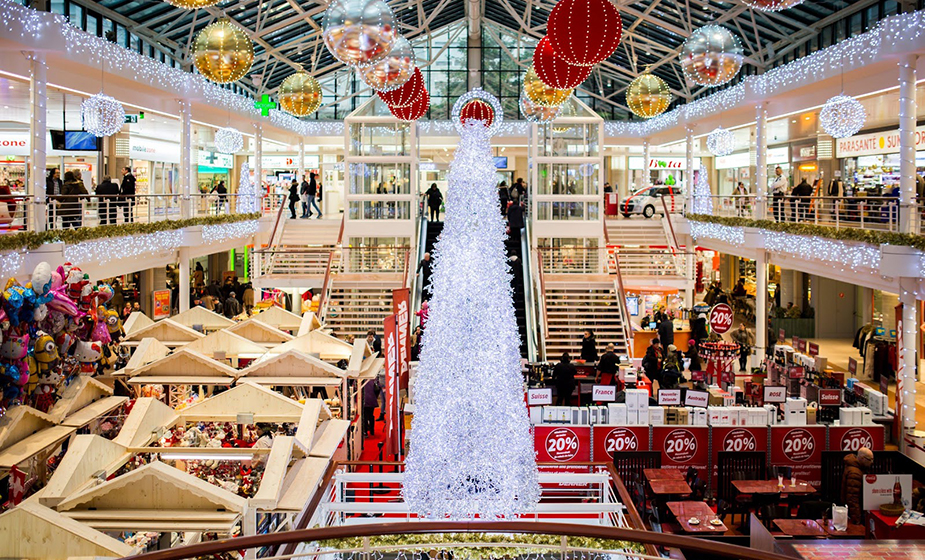Why digital transformation is good for Business & Customer
Have you ever done some online shopping and found the experience quick, simple, intuitive and dynamic, only to then do some physical shopping and realise you should’ve stuck to doing it online?
We’ve all been there. It’s that time of year again. We’ve had Black Friday, Cyber Monday, followed very possibly by Tumultuous Tuesday, Weary Wednesday and Throwaway Thursday. Shopping days during the festive period come thick and fast, and are a boon for retailers and their customers.

We’ve begun to consider Christmas shopping as a ritual we acknowledge much in the same way we do Christmas Day itself, but it needn’t be the same year on year, especially now, given the advent of digital transformation in the retail sector.
Here we’ll be taking a look at:
- What is digital transformation?
- Why digital transformation is good for shops.
- Why it’s good for customers.
- How it’s bridging the gap between physical & online shopping.
So what is Digital Transformation?
Let’s get the lingo out of the way first. Digital transformation refers to the changes in the behaviour of consumers and the ways in which they shop. In layman’s terms it means how we’re gradually shopping more and more online through various devices rather than doing our shopping in person.
That means shops need to adapt. As consumers, we already are. So how can retailers keep up with our new shopping habits? Do they need to abandon their physical stores? Not quite…
Why Digital Transformation is good for shops?
Although on the surface of things the increase in shopping online across various devices, mobile, tablet, laptop, might not seem like it could have a positive effect on the retail sector, it provides retailers with the chance to remould and refine their stores to improve the physical shopping experience.

According to data from eEspaña who carried out a study of digital transformation in the retail sector recently, total sales (both physical and online) have grown from 6.3% in 2014 to 8.6% this year (2016), and that figure they predict will grow year on year.
So even though it might seem as if the advent of digital transformation spells the end of physical shopping as we know it, that simply isn’t the case. The increased ease of shopping has meant that we are now simply shopping more, be it on the high street or on our mobile phone, tablet, laptop, the list goes on…
What’s more, many still find physical shopping to be advantageous over its online counterpart.
So how do shops digitise the physical experience? And moreover, how’s it good for customers?
Digital transformation, as we’ve learnt, doesn’t mean people stop going into stores. Rather, it means they know they can shop at the touch of a button, so the urge to do so by whichever means possible is stronger than ever, be it online, or in store.
Why this is a positive for consumers is down to how they can now interact with stores and their favourite brands.
http://giphy.com/gifs/amy-schumer-relationships-justin-long-9OJBOgrOzvAju
If you take our recent work with Futbol Emotion, who wanted to try and transport their fantastic online service into an actual store, what you see is a conscious effort to bridge the gap between physical and online shopping.
Interactive touch screens are dotted around the store like convenient help stations, and customers can use them to find products they might have seen online, or just to have a look at what’s available in store. They can also compare products, as they might online, andcheck stock availability, just as they might on the website. They can then, should the product be out of stock, order the item to be delivered to their home or to the store the next day.

Further still, shoppers can take a much more detailed look at the products they’re browsing, with staff on hand to help explain any technical details with the added assistance and dynamism thanks to the images and information displayed on screen.
The result is a hybrid; a blending of online functionality and in store convenience. Like the website, Futbol Emotion take the utmost care with how the store is laid out and how one navigates through it. It should be simple, straightforward and innovative. The in store screens help make this possible.
Overhead screens were also incorporated to display new products, which meant that they could utilise these, very much in the way a company might utilise banner ads online, in order to capitalise on advertising space, and to draw customers’ attention to the products that might, for example, be the most popular in that location.
To conclude, digital transformation is a huge process, and one that cannot be boiled down to one or two sentences. It’s happening now and it’s happening steadily. However, certain aspects of it are easily definable and tangible, and they shouldn’t install fear into retailers. rather, as we can see from the case of Futbol Emotion, it should be embraced and explored, and thus utilised to create a better shopping experience for both customers and the retailers themselves.